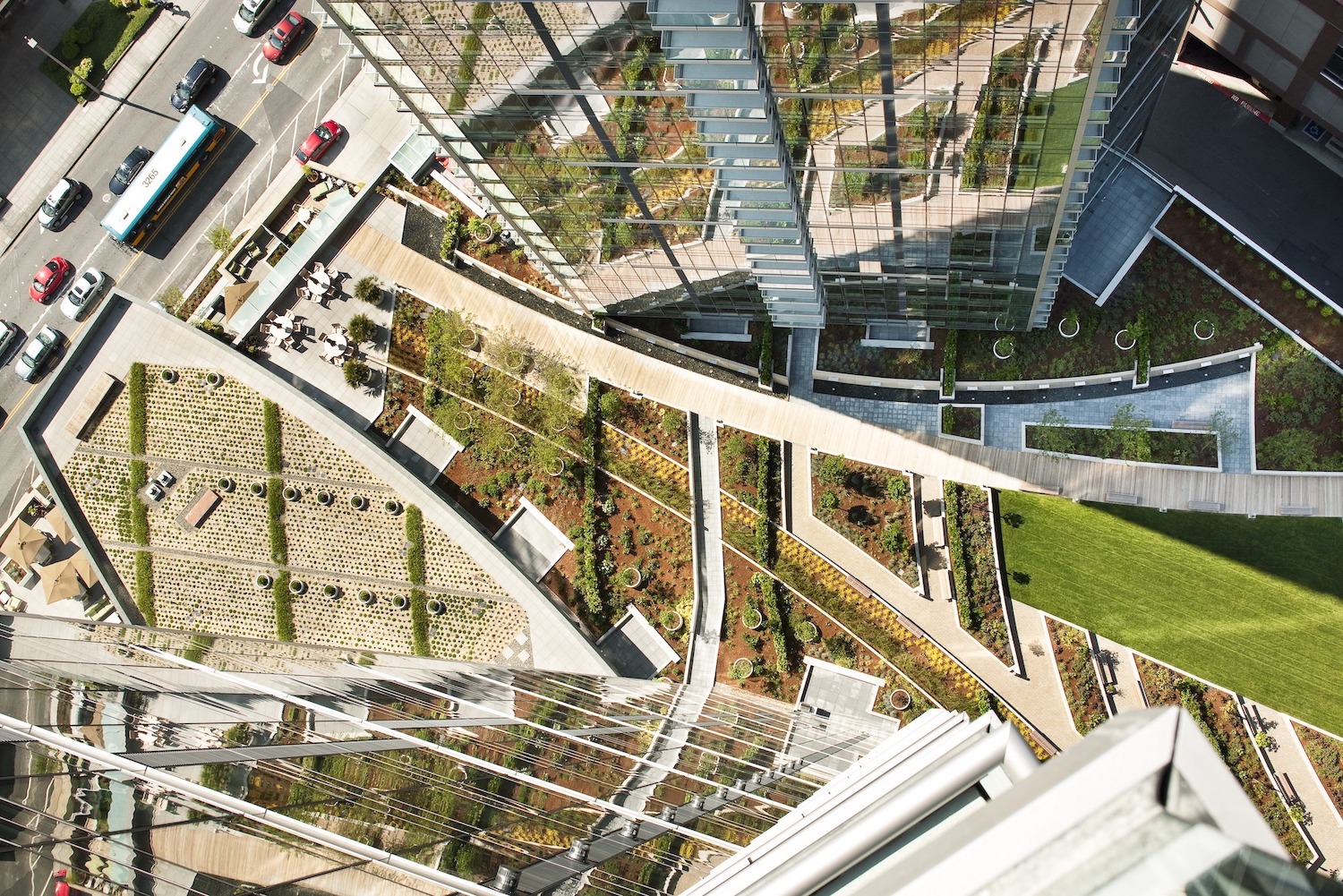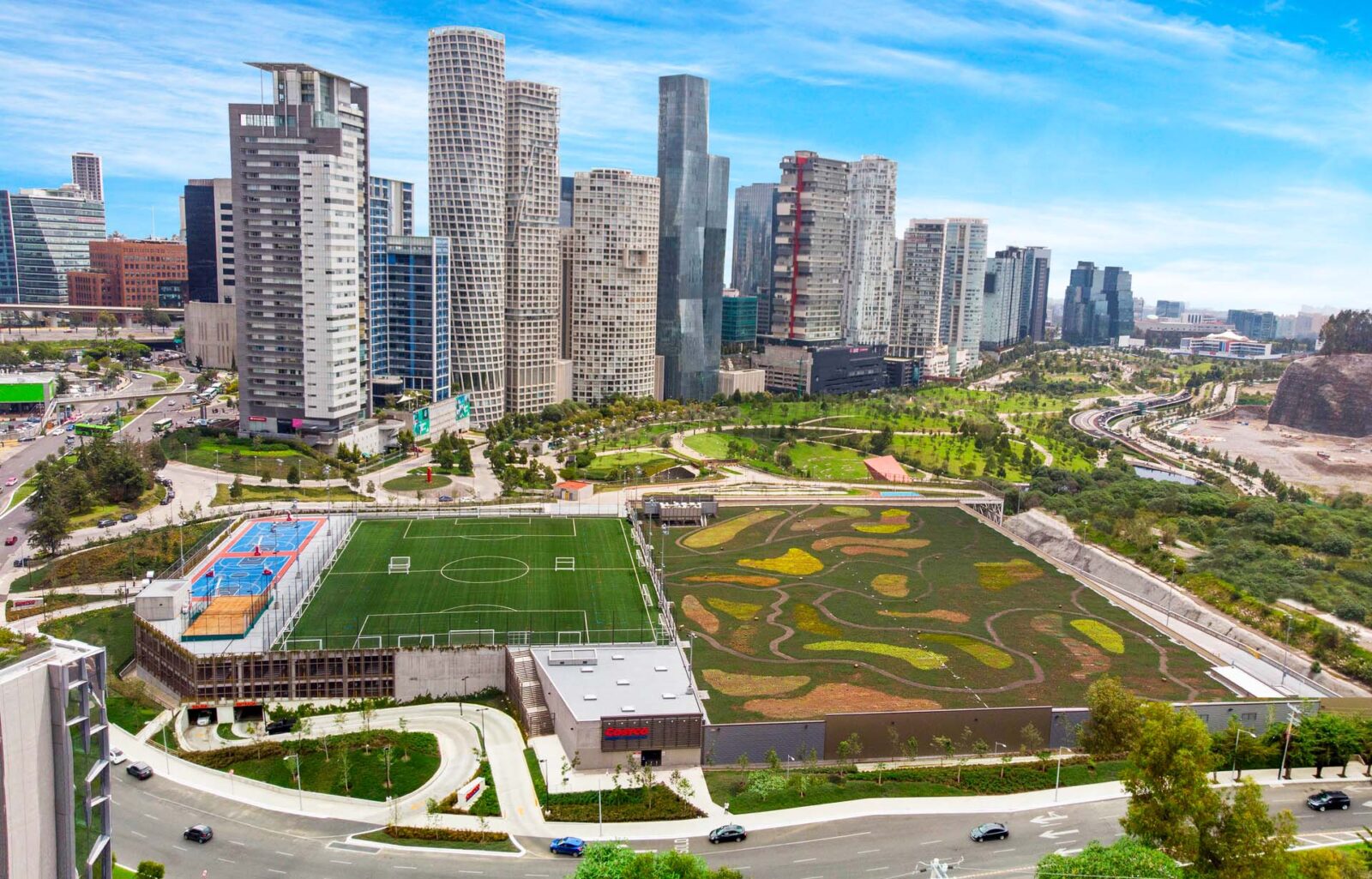观点
超越自我:以数据驱动,致力于可持续设计
11 月 2021 / By 超越自我:以数据驱动,致力于可持续设计, Russ Hazzard

建筑师兼 AIA 2030 创始人 Edward Mazria 曾说过:“当我们试图解决一个棘手的问题时,我们往往会急于求成,但在这种情况下,简单才是王道。更好的建筑、负责任的能源使用和可再生能源的选择,才是我们应对能源独立和气候变化所需的一切。”
直截了当、负责任的设计一直是 MG2 战略和理念的核心,我们始终将可持续的原则和应用融入到我们的每一个项目中。我们的三大可持续发展价值观——环境管理、目标效率和恢复性措施——既体现了公司创立之初的现状,也反映了我们未来的发展目标。MG2 一直致力于不断提升设计标准,不断改进,以达到并超越可持续认证和基准。



MG2 总裁 Russ Hazzard 表示:“我们一直在审查我们的规范,寻找机会向客户推荐可持续产品和方法,在我们刚开始时,这些只是从地点和‘对环境更好’的角度来看的更好的选择。”
如今,这些可持续供应商和材料推荐不仅带来便利,更是我们DNA和设计流程中不可或缺的一部分。因此,曾经可能不愿接受替代方案的客户如今将我们视为专家和倡导者,我们拥有合适的解决方案,能够帮助他们走上更可持续的未来之路。

作为建筑环境的建筑师和设计师,我们所做的每一件事、我们承接的每一个项目,其意义都是显而易见的。AIA 的 2030 挑战概述了承诺公司必须努力实现的两个具体目标:
- 到 2025 年,建筑环境运行能源系统减少 90%。
- 到 2025 年,建筑环境中的碳排放量将减少 45%(这是我们团队规定的百分比)。
“减少温室气体排放是整个行业本世纪面临的挑战。”MG2 建筑性能分析师 Johnny Klemke 表示,“我们如何在不断建造更多建筑的同时,减少对自然环境的影响?这正是 MG2 正在努力解决的问题。通过帮助各团队找到更高效、碳排放更低的设计方案,我们也向客户证明了可持续性并不一定成为项目的成本负担。”
通过帮助团队为他们的设计提出更高效、碳排放更少的解决方案,我们向客户表明可持续性不必成为成本负担。
建筑性能分析师 Johnny Klemke
“我们最大的障碍是让整个行业与我们一起努力,”MG2 的设计师 Jon Guerechit 说道,他负责领导我们的运营能源计划,“一个好处是,无可争议的数据让我们更容易说服客户,一项节省成本的措施可以 还 服务环境。但数据并不总是对我们有利。拥抱环境守护者的心态更加困难,因为它迫使利益相关者以不同的思维方式投资于长远的未来。我们正在全力倡导这种心态。
今天,随着我们继续评估和发展公司的可持续发展行动计划,我们致力于超越友邦保险 2030 年挑战所概述的目标,增加我们自己的两个目标:
- 严格致力于与具有前瞻性的供应商合作并使用 可持续材料 遵守尽可能高的标准。
- 减少 用水量到 2030 年,所有项目室内水管均达到 30% 至 45%,室外饮用水管达到 50%

添加材料到混合物中。
从改善室内空气质量到减少建筑垃圾,我们的建筑师和设计师指定的材料至关重要。我们的选择代表着改善地球及其居民健康的巨大机遇。
除了自豪地签署 AIA 材料承诺之外,MG2 还创建了我们自己严格的材料评估系统。我们的专家采用红绿灯结构,对我们使用的每一家供应商、产品和材料进行分析和排名,以确保我们尽可能地遵守最高的可持续发展标准,共创更美好的未来。
PCC社区超市——美国最大的食品杂货合作社——多年来一直与 MG2 合作,致力于改进其门店的材料,并争取获得 LBC Petal 认证。其巴拉德门店是全球首家获得该认证的食品杂货合作社,其超过 40% 的材料(略低于 $1.4M)均来自可持续来源,其中 9.2% 的材料来自 100 英里以内。此外,该店 100% 的木材获得 FSC 认证,其中 10% 的材料经过回收或再利用。
“有一种误解,认为我们需要追求绿色建筑认证来推动可持续材料的使用,或者我们必须 仅有的 使用可持续材料来改变世界。这两种说法都不正确。
Candon Michelle Murphy,材料专家
MG2 的数据驱动材料系统带来了丰富的知识和洞察力,但持续的教育以克服误解并帮助我们的客户和合作伙伴了解财务和环境投资仍然至关重要。
“选择可持续材料的最大挑战是对其相关成本的误解。”MG2 的材料管理员 Candon Michelle Murphy 提到,“如果要选择可持续材料,市场上确实有一些特定类别的材料需要很高的成本,但也有相当多的材料类别不需要或只需支付很少的费用,就能实现更加环保的最终安装。
“还有一种误解,认为我们需要追求绿色建筑认证才能推动可持续和健康的材料,或者认为我们只有采用可持续材料才能改变世界。然而,这两种说法都不正确:任何能够减少隐含碳排放、减少室内空间挥发性有机化合物 (VOC) 排放量、实现材料回收或避免填埋的选择,仍然具有重要意义。”
通过减少用水产生根本性影响。
水是地球上最宝贵的资源之一。虽然我们许多人在日常生活中将清洁新鲜的水视为理所当然,但在水资源匮乏的地区建造建筑环境的建筑师们,始终将水的保护、减少和可回收性放在首位。
MG2 的节水目标(我们的第四个也是最雄心勃勃的可持续发展计划)是到 2030 年底,在我们的每一个项目中,将马桶和水龙头等设备的室内用水量减少 30% 至 45%,将园林绿化和灌溉中的室外饮用水消耗量减少 50%。
“在我们的项目中,减少用水量有几十个原因,其中很重要的一点是,这样可以降低从当地水源取水量,”MG2 水资源保护目标设计师兼联合负责人 Maribel Barba 说道,“这使我们能够更好地与当地环境协调,增加所有人的可用水量,并改善社区关系。”

虽然我们的节水目标对 MG2 的许多客户来说可能比较陌生,但有些客户多年来一直致力于在其建筑环境中率先采用创新技术和节水策略。例如,长期合作伙伴 Costco 多年来一直与 MG2 合作,在其位于墨西哥和美国西南部的仓库中实施节水方案,这项计划使其每年节水量达到 20%。
这家批发巨头最近在其圣达菲门店,向节水的未来迈出了更重要的一步。圣达菲门店拥有独一无二的绿色屋顶,作为墨西哥公园的自然延伸,并采用了多项节水技术,包括利用再生水的厕所和景观灌溉系统,以及公园湖的雨水收集系统。根据基准数据,安装的卫生间设备用水量减少了50%。
“即使节水流程已经实施多年,我认为企业要让合作伙伴接受这一理念仍然颇具挑战性。”MG2节水目标设计师兼联合负责人克里斯蒂安·拉佐 (Christian Razo) 表示,“许多人并没有意识到可以节约多少水,甚至不知道不节水的后果。我们竭尽全力让每一位客户了解实施这些流程的益处,包括知道自己所做的事正在造福子孙后代所带来的满足感。”

我们在可持续设计实践方面取得了长足进步,并为众多项目和合作伙伴所取得的成绩感到无比自豪。但事实上,MG2 才刚刚起步。
“当我们着手创建 MG2 的可持续发展正式框架时,我们知道它需要引起所有员工的共鸣,并融入公司的文化。”MG2 可持续发展负责人马克·泰勒 (Mark Taylor) 表示,“我们以数据为导向的方法直接体现了公司以结果为导向的本质,并将成为我们继续前进的成功支柱。”
MG2的可持续发展行动计划

详细了解我们对地球未来的卓越承诺,请访问我们的 AIA 2030承诺可持续发展行动计划, 或通过 联系我们的可持续发展团队.



